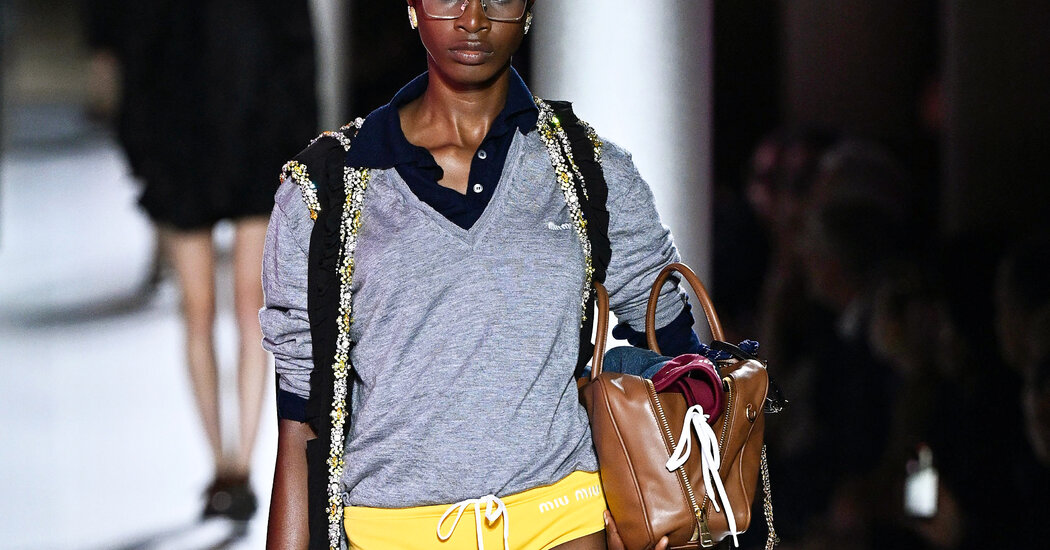
At Chanel, meanwhile, Virginie Viard was riffing on the Villa de Noailles, the 1920s artistic salon in the South of France and the creative milieu Coco shared, with bouclés and seaside stripes, long-line bathing suits and flirty cover-ups, logos and flowers and pearls galore. The problem is, for every great piece — a pleated black and white halter neck gown, for example, or a kind of ironically fun tweed caftan — there’s another that has all the subtlety of boardwalk souvenir shop Chanel without any of the irony.
“Whatever”
It’s Mrs. Prada’s self-awareness and ability to both love fashion and recognize the issues with it, to embrace the inherent tensions and related absurdity of even worrying about such tensions, that makes it possible for so many to recognize themselves (or their many selves) in her work.
“Fashion comes when you want a distraction, when you are not too serious,” she said after the Miu Miu show. “But then you need to think about the rest, so you need clothes you can live with, and clothes that you can think with.”
During the show, a piece of video art titled “Gravity & Grace” from the Qatari-American artist Sophia Al-Maria played on screens set up around the venue, featuring a stuntwoman, Ayesha Hussain, in those Prada hot pants, gas station jackets and knee-high boots, going through different exercises with a sword and a cross bow, and twirling around like a jewel-box ballerina. It didn’t have much to do with what was on the runway, other than evincing, the show notes said, “a congruent intellectual viewpoint.”
At the finale, after Cailee Spaeny — the actor who plays Priscilla Presley in Sofia Coppola’s coming biopic “Priscilla” — had walked out in a plain black coat, the video flashed a close-up of a gum-chewing face and the word “whatever.”
It was the perfect ending.






